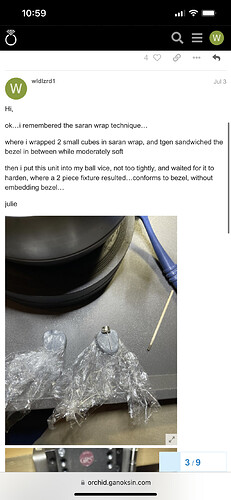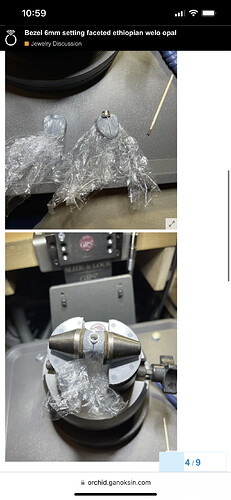Hi,
holding devices…ah…what a broad and dangerous(ly costly) topic!…
as far as inexpensive options:
if you are doing flat pendants, i have seen people glue(?) it down onto a wood block, and then clamp the block in a vise of some sort…not sure what glue they use or how they remove the piece from the glue…especially if a heat sensitive stone is involved…
if you are doing a ring with a uniform width you can also use a bench vise with leather to protect the shank
when considering the various tools available, you might also contemplate where and how you want to sit…and what tools you will be using…that may affect your choice(s)
ie: if you want to be at your bench pin, using a flex shaft, then perhaps a GRS benchmate system would work well for you
if you want to work on a lower surface, with a hammer and punch, then an engravers ball vise might work well for you
both of the above allow for rotation or fixed positions, whereas a vice, while potentially a lot less expensive, would work better for fixed positions…
vises come in many sizes…and many price ranges…i have a Panavise clamped to my bench and use it alot…it has a ball joint…and rotates…and gas plastic jaws…
i have always coveted those cute little iron/ steel bench vises that i have seem on peoples benches…
i have a big vice but it is mounted on another bench table…i use it standing…
thermoloc is a good way to hold an item in a vise…you can use saran wrap on two pieces to make a two part easy release fixture…thermoplastics are great but if molded around a piece usually do require heat to soften them up for piece extraction
thermoloc has a nice consistancy
jett sett basic is more viscous and sticky when softened and is great for small settings and such
both require heat to soften, then they harden, and tgen require heat to soften for piece removal…or you can use the satan technique
julie

